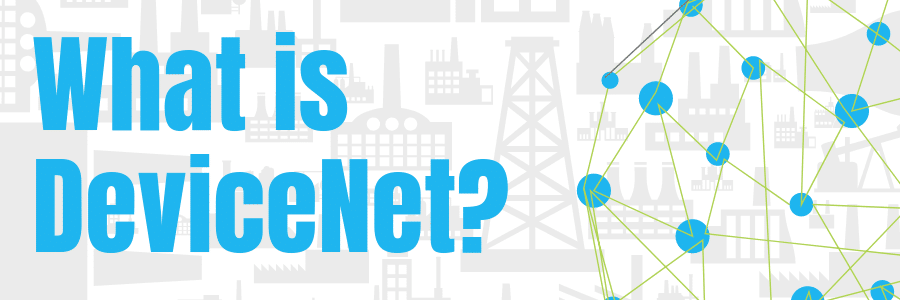DeviceNet has been around since the late 1990s and is still widely used in many manufacturing facilities around the world.
It’s successor, EtherNet/IP, has long since taken the throne, but DeviceNet has been kept alive due to the manufacturing industry’s typical slow adoption of new technologies and the use of DeviceNet gateway devices, which enable devices that support other networks to control DeviceNet devices.
What is DeviceNet?
DeviceNet was invented by Rockwell Automation but the IP was turned over to an independent entity, the Open Device Vendors Association, a global industrial automation association, now known as ODVA to make it an “open” protocol that would be adopted by other industrial product OEMs.
ODVA defines DeviceNet as the following:
DeviceNet® is a digital, multi-drop network that connects and serves as a communication network between industrial controllers and I/O devices, providing users with a cost-effective network to distribute and manage simple devices throughout the architecture. DeviceNet utilizes CAN (Controller Area Network) for its data link layer, the same network technology used in automotive vehicles for communication between smart devices.
Basic Principles of DeviceNet
- High-level protocol that runs on top of Controller Area Network (CAN)
- Master/Slave network that supports peer-to-peer communications (as opposed to J1939 which is specifically a peer-to-peer network)
- Uses 11-bit identifiers in the message headers (unlike J1939, which uses 29-bit identifiers)
- Supports up to 64 nodes on a single network
- Standard network transmission rates are 125k, 250k and 500k bits per second
- Network max length is determined based on the network transmission rate and the type of cable being used (e.g. at 500k the max length can be as short as 246 feet with flat cable and as long as 1,640 feet at 125k with thick cable)
- DeviceNet Slaves must support a minimum of 1 of the 3 data exchange methods identified as Cyclic, Polled or Change of State (COS)
- Since DeviceNet runs over a standard CAN network, the physical layer requires two 120 ohm resistors (terminators) at each end of the network
- DeviceNet cable includes 24vdc Network Power as well as the CAN H/L connections
Where is DeviceNet Used?
- Industrial Automation – control and monitoring systems
- Water and wastewater – pumps and valves
- Pulp and paper – motor control centers
- Packaging and material handling – conveyor systems
- Semiconductor processing – machinery
- Automotive manufacturing – manufacturing lines
- Food and beverage – preparation and packaging machines
How DeviceNet Works
DeviceNet supports up to 64 nodes on a single DeviceNet network, which can consist of 1 Master and up to 63 slaves or Multiple Masters controlling their own unique set of Slaves on the same physical network.
DeviceNet supports Master / Slave (Group 2 only) and peer-to-peer communicationand uses I/O and explicit messaging for control, monitoring and configuration.
DeviceNet utilizes Common Industrial Protocol (CIP™) at the application layer.
DeviceNet connectivity can be complicated. Don’t feel like you have to figure it out all on your own. Pyramid Solutions has been involved in the implementation and integration of DeviceNet since the onset of the technology – reach out if you have questions.
Glenn Beal
Senior Account Executive Network Connectivity & Intelligent Manufacturing
About the Author: I have an electronic hardware and software engineering background and have been involved in product development and network connectivity for over 25 years. Currently, I lead the sales efforts for Pyramid Solution’s Network Connectivity business which includes engineering services,our NetStaX Protocol Stacks and toolsand BridgeWay Gateways. When I’m not solving engineering and connectivity challenges, I enjoy restoring classic cars and cruising in my 66 Thunderbird.

